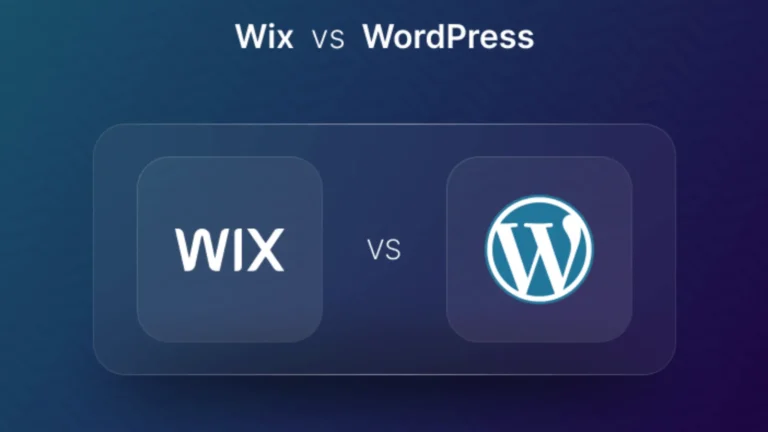Technical SEO is the backbone of a website’s visibility and success in search engine rankings. It involves optimizing a website’s infrastructure to make it easier for search engines to crawl and index its content.
This includes a range of tasks, from ensuring the site is mobile-friendly and loads quickly to securing it with HTTPS and implementing structured data. The goal is to enhance the user experience while making the site more favorable in the eyes of search engines.
Website crawl ability and indexing
Ensuring that your website can be easily crawled and indexed by search engines is the first step in technical SEO. Crawlability refers to a search engine’s ability to access and crawl through a website’s content. Indexing, on the other hand, involves adding web pages into the search engine’s database. If a site cannot be crawled, it will not be indexed, meaning it won’t appear in search results.
To improve crawlability and indexing, start by using a robots.txt file to guide search engine bots on which pages to crawl and which to avoid. Also, ensure your website has a sitemap, a file that provides information about the pages, videos, and other files on your site, and how they relate to each other. Search engines read this file to crawl a website more intelligently. Regularly updating your sitemap and submitting it through search engine webmaster tools is crucial for ensuring that new or updated content is discovered and indexed efficiently.
Lastly, avoid using excessively complex URLs and ensure your website’s content is not blocked by requiring logins or using formats that search engine bots cannot understand. Ensuring that search engines can easily crawl and index your site will improve its visibility and ranking in the search results.
Site architecture and navigation
A well-organized site architecture and intuitive navigation are vital for both user experience and search engine optimization. When your website is structured logically, it helps search engines understand your site’s hierarchy and the importance of each page. This understanding can influence your site’s visibility in search results.
To optimize your site architecture, start by organizing your content into categories and subcategories that make sense for your audience. Use a logical URL structure that reflects this organization, making it easier for both users and search engines to navigate your site. A clear hierarchy and simple navigation can also encourage visitors to spend more time on your site, reducing bounce rates and improving the chances of conversion.
Breadcrumb navigation is another essential aspect of a well-structured website. These navigational aids help users understand their location within your site and allow search engines to grasp the structure of your content more effectively.
Implementing an HTML sitemap can further enhance navigability for both users and search engine bots. While your XML sitemap serves search engines, an HTML sitemap is designed for users, offering them a one-page directory of all significant site sections and pages.
Secure your site with HTTPS
Securing your website with HTTPS is no longer optional. HTTPS, the secure version of HTTP, encrypts data transmitted between a user’s browser and your website, protecting it from interception or tampering. Google has confirmed that HTTPS is a ranking signal, meaning a secure site is more likely to rank higher in search engine results than a non-secure one.
To transition your site to HTTPS, purchase and install an SSL (Secure Socket Layer) certificate. It’s also important to update your website’s internal links to HTTPS and set up 301 redirects from HTTP to HTTPS versions of your pages to preserve search engine rankings. Additionally, verify your HTTPS site in Google Search Console to monitor its performance and identify any security issues.
Page speed optimization
Page speed is another critical factor for both user experience and search engine rankings. Research indicates that fast-loading pages lead to higher visitor engagement, retention, and conversion rates. Search engines use page speed as a ranking factor, prioritizing websites that offer a faster, smoother user experience.
To optimize your page speed, start by compressing images and using efficient file formats like WebP, which offers high-quality images at smaller file sizes. Implementing lazy loading for images and videos can also improve loading times by loading these elements only as they come into view on the user’s screen.
Next, leverage browser caching, which allows repeat visitors to load your website faster by storing elements of your site in their browser cache. Minifying CSS, JavaScript, and HTML—removing unnecessary characters without affecting functionality—can also significantly reduce file sizes and improve page load times.
Additionally, consider using a Content Delivery Network (CDN) to distribute the load by serving your website from multiple locations closer to your visitors, further speeding up access to your content.
Mobile optimization
With the ever-increasing use of smartphones for internet access, mobile optimization has become a cornerstone of technical SEO. Mobile-friendliness is a significant ranking factor for search engines, especially after Google’s mobile-first indexing update, which prioritizes mobile versions of content for indexing and ranking.
To ensure your site is optimized for mobile, adopt a responsive design that adjusts content layout based on the device used to access your site. This approach eliminates the need for a separate mobile site and ensures a consistent user experience across all devices.
Additionally, pay close attention to the usability aspects of your mobile site, such as touch-friendly navigation, easily readable fonts, and optimized image sizes. Avoid using Flash, as it’s not supported by most mobile devices and can hinder your site’s usability.
Another key aspect of mobile optimization is page speed, as mobile users often rely on cellular data, which might not be as fast as wired connections. Techniques like compressing images, caching, and minimizing code can help improve loading times on mobile devices.
Internal linking strategy
An effective internal linking strategy helps spread link equity (ranking power) across pages, improves crawl ability for search engines, and enhances the user experience by providing further reading options. Thoughtful internal linking can significantly impact your site’s SEO performance, encouraging search engines to index more of your pages and understand their relevance and relationship to one another.
To implement a robust internal linking strategy, start by identifying your cornerstone content—these are the most important articles or pages you want to rank highest. Link back to these pages frequently, using relevant anchor texts that accurately describe the linked page’s content.
Make sure each page on your site has at least one internal link pointing to it and use a logical structure for your internal links. Avoid excessive linking from unrelated pages or sections, as this can dilute the value of your links and confuse both users and search engines about the relationships between your pages.
Lastly, regularly audit your internal links to identify and fix broken links, which can hurt your site’s usability and SEO. Tools like Google Search Console can help you track down these issues and maintain an effective internal linking architecture.
Schema markup
Schema markup, also known as structured data, is a powerful tool for technical SEO that helps search engines understand the context of your content, enabling them to display rich snippets—enhanced descriptions—in search results. Rich snippets can significantly increase click-through rates by providing users with a preview of the content, making your listing more appealing.
To implement schema markup, first choose the most relevant schema.org vocabulary for your content. Whether it’s for an article, product page, event, or local business listing, selecting the appropriate category can enhance the visibility and attractiveness of your search listings.
You can add schema markup to your webpage’s HTML using microdata or JSON-LD formats, with JSON-LD being recommended by Google for its ease of implementation and maintenance. Tools like Google’s Structured Data Markup Helper can simplify the process by generating the necessary code, which you just need to paste into your site’s HTML.
After implementing schema markup, use Google’s Rich Results Test to ensure it’s correctly recognized and eligible for rich results. This can help diagnose any issues and confirm that your content can benefit from the enhanced visibility afforded by structured data.
Duplicate content
Duplicate content refers to substantial blocks of content within or across domains that either completely match other content or are appreciably similar. Search engines strive to provide the best search experience by delivering unique and diverse results, which means that having duplicate content can negatively impact your site’s visibility and ranking.
To tackle duplicate content issues, first ensure that you have clear and consistent guidelines for managing and producing content. If similar content is unavoidable (for instance, in product descriptions across similar items), consider using the canonical tag to tell search engines which version of the content is the “master” or primary source. This helps avoid diluting your SEO efforts and keeps the focus on a single, authoritative version.
Furthermore, use 301 redirects for any content that has been moved or deleted to guide search engines and users to the most relevant, up-to-date content.
It’s also advisable to periodically audit your site for duplicate content using tools like Copyscape or Siteliner. Such tools can help you identify instances of duplication you may not be aware of, allowing you to take corrective action before it affects your search rankings.
By proactively managing and mitigating duplicate content, you can ensure that your site remains favored by search engines.
Putting it all together
From ensuring your website is easily crawlable and indexed by search engines, to optimizing your site architecture and security, improving page speed, ensuring mobile-friendliness, developing an internal linking strategy, utilizing schema markup, and managing duplicate content—each element plays a vital role in enhancing your site’s SEO performance.
Start by auditing your current website to identify areas that need improvement. Tools like Google Search Console and various online SEO audit tools can provide you with valuable insights into your website’s technical health. Prioritize issues based on their impact on your site’s performance and user experience, and tackle them systematically.
Remember, technical SEO is not a one-time task but an ongoing process. The digital landscape and search engine algorithms are constantly evolving, so your SEO strategies should too. Stay informed about the latest SEO trends and best practices, and be prepared to adapt your strategies as necessary.
In conclusion, mastering technical SEO requires attention to detail, a commitment to quality, and a willingness to stay updated with the changing digital environment. By implementing the tips outlined in this checklist, you’re setting your site up for success, ensuring it’s optimized for both search engines and users, and ultimately, enhancing your online presence.




